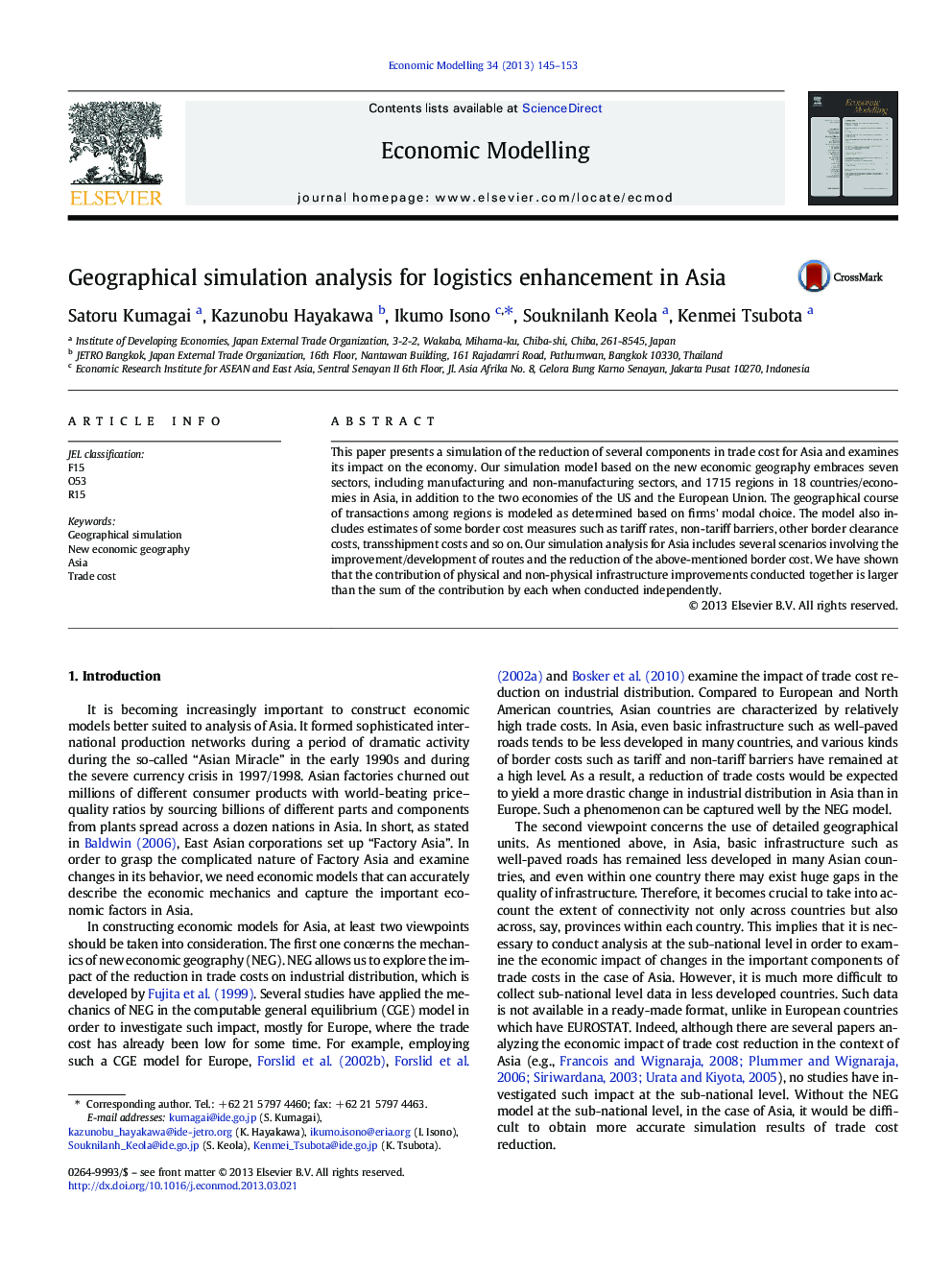| Article ID | Journal | Published Year | Pages | File Type |
|---|---|---|---|---|
| 5054224 | Economic Modelling | 2013 | 9 Pages |
Abstract
This paper presents a simulation of the reduction of several components in trade cost for Asia and examines its impact on the economy. Our simulation model based on the new economic geography embraces seven sectors, including manufacturing and non-manufacturing sectors, and 1715 regions in 18 countries/economies in Asia, in addition to the two economies of the US and the European Union. The geographical course of transactions among regions is modeled as determined based on firms' modal choice. The model also includes estimates of some border cost measures such as tariff rates, non-tariff barriers, other border clearance costs, transshipment costs and so on. Our simulation analysis for Asia includes several scenarios involving the improvement/development of routes and the reduction of the above-mentioned border cost. We have shown that the contribution of physical and non-physical infrastructure improvements conducted together is larger than the sum of the contribution by each when conducted independently.
Related Topics
Social Sciences and Humanities
Economics, Econometrics and Finance
Economics and Econometrics
Authors
Satoru Kumagai, Kazunobu Hayakawa, Ikumo Isono, Souknilanh Keola, Kenmei Tsubota,
